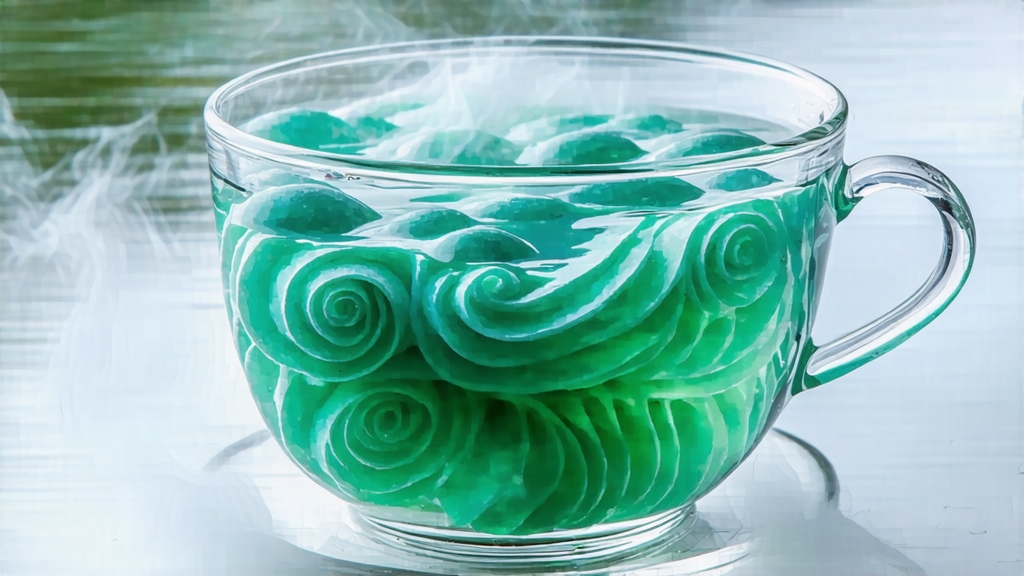
Biluochun, whose name translates literally to “Green Snail Spring,” is one of China’s ten most celebrated teas, yet it remains a quiet mystery to many drinkers outside East Asia. Grown on the mist-capped hills that rim eastern Taihu Lake in Jiangsu Province, this emerald-green tea is prized for the tight spiral each bud assumes, a shape that reminded Qing-dynasty poets of a tiny jade snail. Beyond its charming appearance, Biluochun carries a thousand years of recorded history, a production craft so meticulous that one experienced worker finishes barely half a kilo per day, and a cup profile that layers floral, fruity and marine notes in a single sip. This article invites international tea lovers to explore every dimension of the tea—from the legends of its birth to the exact angle at which you should pour water over the fragile curls.
1. Historical whispers from the lake
The first reliable mention of Biluochun appears in the Tang dynasty travelogue “Tea Notes of Taihu,” but the tea did not acquire its modern name until the late seventeenth century. Local lore claims a tea picker startled by the sudden appearance of a green snail in the bushes cried out; her amused companions repeated the exclamation, and the name stuck. A more courtly version credits the Kangxi Emperor, who visited Suzhou in 1699. Presented with an unnamed tea whose fragrance drifted before the cup even arrived, the emperor declared it “green as jade, curled like a snail, and plucked in spring,” thus bestowing the poetic label. Whatever the truth, imperial favor catapulted the tea into tribute status, and by the Qianlong era Biluochun surpassed even Longjing in palace annals for price per liang.
2. Terroir: where lake mist meets fruit trees
Unlike many Chinese greens grown in pure tea gardens, Biluochun bushes are interplanted among peach, plum and apricot trees on the Dongting Dongshan and Xishan peninsulas. The lake’s expansive surface stores daytime heat and releases night-time moisture, creating a constant veil of fog that diffuses sunlight into softer, longer wavelengths. The fruit blossoms in early spring add volatile esters to the air; tea leaves absorb these compounds, which later emerge in the cup as an unmistakable orchid-peach nuance. Soils are acidic sandy loam rich in quartz and feldspar, excellent drainage preventing the grassy astringency that plagues lesser green teas. Elevation is modest—barely 100–300 m—but the slope angle forces roots to struggle, concentrating amino acids especially L-theanine, which bolsters sweetness and umami.
3. Cultivar lineage: two bushes and their babies
Authentic Biluochun is made almost exclusively from two closely related seed-propagated cultivars: Dongshan Xiaoye (Small-leaf of Dongshan) and Xishan Xiaoye. Both exhibit tiny oval leaves, short internodes and an unusually high bud-to-leaf ratio. In the 1980s researchers cloned select bushes into the improved variety “Su Cha No. 12,” which keeps the classic flavor while yielding 30 % more leaf. Purists insist only the traditional seed-grown plants give the tea’s signature “guo xiang” (fruit aroma), much like Burgundy winemakers championing Pinot Noir finicky temperament. When buying top-grade Biluochun, look for the harvest location printed in Chinese on the tin; if it reads “Dongting” you are in the genuine zone, whereas “Sichuan Biluochun” or “Guizhou Biluochun” indicates the same cultivar transplanted but expressing a different terroir.
4. Plucking calendar: one leaf, one bud, one dawn
The picking window opens around Grain Rain (April 5–19) when overnight temperatures stabilize above 10 °C. Only the standard “one bud unfolding against the first leaf” is taken, ideally before 10 a.m. while dew still pearls the shoots. Experienced pickers use a twisting motion rather than a snap, preventing the bruising that would oxidize edges brown. A full day’s work for the fastest hand yields barely 500 g of fresh leaf, which shrinks to 100 g after processing. Because the spiraling step demands extreme tenderness, any stem longer than 2 cm is discarded; thus every kilogram of finished tea represents roughly 60,000 individual buds.
5. Crafting the snail: withering, fixation, rolling, roasting
Within two hours of plucking